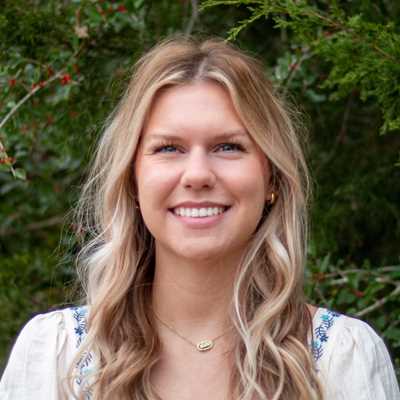The 2023 Urban Riparian Symposium brought water professionals from across Texas together to learn about completed, ongoing and future urban stream restoration projects. The annual event was held Feb. 8-10 in San Marcos, co-hosted by the Texas Water Resources Institute (TWRI) and Texas Riparian Association (TRA).
On the first day of the event, participants could choose between three guided riparian walk field experiences: a Blanco River conservation demonstration site in Wimberley, several intensive-use recreational riparian areas in San Marcos, or habitat conservation sites in San Marcos’ City Park. These field outings showed local examples of riparian areas used for intensive recreation.
These field trips were popular with attendees, allowing them to view different habitats and restored areas, with commentary and insights from project experts.
Keynote speakers encourage innovation
The symposium’s following two days featured 44 speaker presentations and discussions that covered case studies from around Texas, riparian restoration partnerships, stormwater management research, riparian corridor strategies, and more.
“These presentations really brought into real-time for me how pressing some of these issues are in our riparian areas, and that action needs to be taken sooner rather than later to preserve our natural environment,” said Jason Gerlich, symposium attendee and TWRI research specialist.
Keynote speakers for this event included Ryan King, Ph.D., research professor in Baylor University’s Department of Biology and Center for Reservoir and Aquatic Systems Research; Amy Belaire, Ph.D., Texas science and strategy program advisor for The Nature Conservancy; and Katherine Romans, executive director of the Hill Country Alliance.
“Dr. Ryan King from Baylor gave an extremely relevant presentation on algal blooms and nutrients and streams,” said Alexander Neal, TWRI program specialist and symposium co-host. “It was so relevant to the point that he had content in his presentation of pictures and activities from literally the day before.
“It had a lot of content that perhaps struck fear into some of the audience in terms of where some of our natural resources are going in Texas regarding degradation and losses of resources, but Romans also set a tone of hope and excitement for the work that's being done to prevent these types of losses and to keep our natural resources in good shape and good hands,” Neal said.
Attendees gain networking and riparian insights
Fervent Riparian Open Discussion Opportunity (FRODO) was a new addition to the event this year. Each FRODO had an audience of 30 to 60 participants, which gave everyone in the room an opportunity to voice their insights, Neal said, and a facilitator brought in topics, ideas and questions for the group to think about and discuss.
“The FRODOs were useful and very engaging for the audience,” he said. “Everyone was very insightful. It's great to have that collective thought and just be vocal in the room all at once; it was really unique and fun.”
By the conclusion of the symposium, many attendees made new networking connections, creating future project collaboration opportunities.
TWRI and TRA will continue this annual event at a new location next year. Subscribe to the Natural Resources Training Courses Update newsletter to receive updates about riparian-related training and next year’s symposium.
The symposium was hosted and sponsored by TWRI and TRA, and additional sponsors included the Texas State Soil and Water Conservation Board, Texas Parks and Wildlife Department, Upper Trinity Conservation Trust, Trinity River Authority of Texas, Meadows Center for Water and the Environment at Texas State University, Tarrant Regional Water District, and Texas A&M Forest Service.


